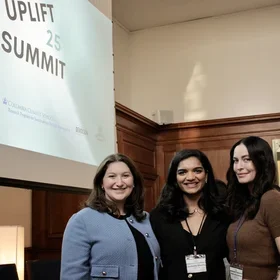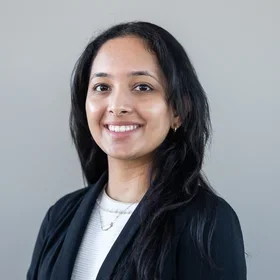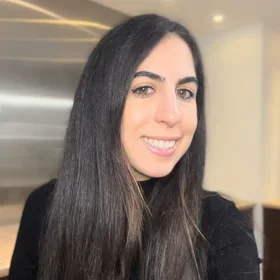“Listen to how someone tells their story, and be open to it.” That’s how Donna Bulseco, alumna of the M.S. in Narrative Medicine program, describes the philosophy of her former professor Dr. Rita Charon. Bulseco is one of the managing editors of The Intima: A Journal of Narrative Medicine, an online-only literary and arts journal edited by students and alumni of the program. The team recently published their Spring 2015 issue and commissioned a redesign of the online magazine earlier this year. The magazine's new look debuted last month.
A group of Columbia University M.S. in Narrative Medicine students launched the magazine in 2010. The journal operates with a guiding principle of promoting “the theory and practice of Narrative Medicine, an interdisciplinary field that enhances healthcare through the effective communication and understanding between caregivers and patients.” To that end, the nine editors of The Intima curate and edit nonfiction, fiction, poetry, art, and beyond in order to illuminate “the intimate interface between two people, one as healer, one as being healed, who both yield and gain from the experience of the clinical encounter.”
As of April 2015, the magazine's editorial staff includes Donna Bulseco, Jennifer Adaeze Anyaegbunam, Anjana Bala, Elizabeth Barone, Mario De La Cruz, Aubrie-Ann Jones, Zohar Lederman, Ruth Marks, and Michael Smolka. We spoke with Bulseco about the ethos of The Intima, the scope of its work, and some of her favorite Narrative Medicine pieces.
Can you tell me about the genesis of The Intima?
It's an online journal that is dedicated to promoting the theory and practice of Narrative Medicine. For those who don’t know what Narrative Medicine is, it's an interdisciplinary field that aims to enhance healthcare through effective communication between caregivers, doctors, nurses, family members, and patients. It was a [magazine] that was supported by Dr. Rita Charon and other professors in the program, but it acts as a very independent, literary Narrative Medicine journal.
When you do a Narrative Medicine workshop, you use a primary text: a poem, a short story, or a movie, song, graphic novel. You look at the text, you discuss it, and then you give the people involved in the workshop a prompt that relates to what you just read. People write for five minutes, and then read, share what they've written.
Some of the most profound kinds of insights come out of that writing. That kind of process – that kind of discipline and close reading – I think it's what is very different about Narrative Medicine.
I'm curious about how your team runs the magazine.
We have a staff of nine editors. We're all over the country, we're from different disciplines, and we're at different stages in our lives and our careers.
We have very strict submissions guidelines. We accept fiction, nonfiction, academic work, poetry, studio art, multimedia, and field notes – which is very unique to us and which other medical online journals don't have.
What elements are you looking for in these submissions?
We're really looking for a strong, literary voice. Even in the academic papers that are submitted, we want a very high level of talent in terms of writing ability and being able to articulate an original experience of illness, caregiving, or being a doctor or a nurse.
[Our contributors include] a psychology professor at the University of Warsaw. There was a bone cancer survivor from Boston, a patient advocate from Huntsville, AL. We ran a poem by Emily Sorg. She's a medical student at Icahn School of Medicine at Mount Sinai, but she also won the William Carlos Williams poetry award. So we're attracting people in the medical field who are writers also. We get all kinds of writing – from all around the world.
What are some of your favorite Narrative Medicine texts or works that you've seen recently?
I did my practicum with a group called the Lang Youth Scholars. For the students, it’s a six-year commitment to coming on Saturdays and being exposed to the medical world. [According to the program's website, it “serves talented youth in the Washington Heights/Inwood community who aspire to pursue medical and nonmedical careers in healthcare.”] It's a very diverse group, and it's a group that may not receive enough exposure [to healthcare careers].
I taught six workshops to eighth graders. We watched a video clip from The Diving Bell and the Butterfly. The clip focused on how the patient ends up being able to write and create by blinking his eyes. There's an alphabet that he developed with the nurse to essentially dictate, through the blinking of his eyes, this amazing book. [The students] were all so excited: "What happened to him?" "Is he still alive?" We also talked about the idea of creating when you don't know that you can create, and the messages that eyes tell us.
There was this profound moment where [one student] talked about an experience of having a friend whose mother had been shot. He had gone to the funeral and, reflecting on it, he said, "I looked into my friend's eyes and saw something I had never seen before – so much pain and sadness and anger." And then he said, "Four years later, when my grandfather died, I looked in the mirror, and I saw the same look in my eyes."
He was able to identify those emotions and understand, too, how to be open to what stories other people are telling.


